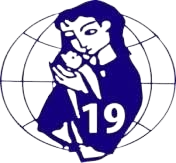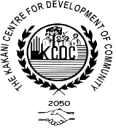PROGRAM
Community Literacy Program
Women Reading for Development Project
Integrated Project for Protection and Welfare of Children and Women in Nuwakot
Community Horticulture Development and Income Generation Project
Women Empowerment and Trafficking Prevention Program
Agriculture Development and Income Generation Project
Plantation and Environment Conservation Program
CSEC Trafficking Risky Migration Prevention Program
Project for Livelihood Development and Income Generation for women
Agroforestry Development and Climate Change Prevention Program
Drinking Water and Sanitation Program
New Step New Path Project
Human Liberty Initiative Project
Education School Building Construction and Sponsorship and Library Promotion Project
Integrated Health and Nutrition Program – Suaahara I & II
Nepal Earthquake Response Recovery and Reconstruction Program
Health Recovery and Reconstruction Project
CSEC Education Trafficking Modern Slavery and Risky Migration Prevention Project
Community Literacy Program
Literacy Programme.
Woman Literacy Classes (WLC/NFE).
Literacy programme has been emphasized in the project area in order to make women and girls aware of their situation and understand the prospects to improve it. Literacy (reading and writing skills) is the important tool for education and understanding the situation around Therefore women literacy classes (WLC) under the supervision and management of local committees in the respective villages are being facilitated in the project area of KCDC/SEBS/PE. The simple objective of women literacy classes is to make the women and girls able to read and write simple Nepali texts and solve simple numerical calculations but the broader objective is to make familiar with the existing situations related to education, health, livelihood, environment, girl trafficking, child rights, women innate rights, etc. and the probable prospects to improve the conditions for the betterment of the community in large. Altogether 45 Women Literacy Classes (WLC) were facilitated by local volunteers (95% woman facilitators) in all locality and street of the every ward of Samundradevi and SikreV.D.C.
Initial 10 days facilitator training was provided to the 45 facilitators in KCDC Central Office at Kakani Height for basic teaching skill and refresher training was also provided on mid-time for facilitators during the 6 months literacy classes running. Literacy certificates were given to the successful participants (1473 female members) who have completed six-month s of regular classes and are capable to read and write Nepali prints and writings and solve simple numerical calculations.
Main aims of this programme; to improve access for women and girls to a form and quality of education that imparts the skills and awareness necessary for them to participate in their own development. Literacy and awareness at least one literate member per family becoming literate to class 3 passed to equivalent and having demonstrated use of this training and it will be key indicator to amend poor lives in the rural community.
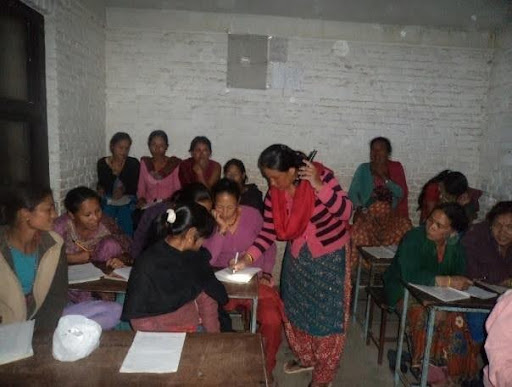
Literacy programme has been emphasized in the project area in order to make women and girls aware of their situation and understand the prospects to improve it. Literacy (reading and writing skills) is the important tool for education and understanding the situation around Therefore women literacy classes (WLC) under the supervision and management of local committees in the respective villages are being facilitated in the project area of KCDC/SEBS/PE. The simple objective of women literacy classes is to make the women and girls able to read and write simple Nepali texts and solve simple numerical calculations but the broader objective is to make familiar with the existing situations related to education, health, livelihood, environment, girl trafficking, child rights, women innate rights, etc. and the probable prospects to improve the conditions for the betterment of the community in large. Altogether 45 Women Literacy Classes (WLC) were facilitated by local volunteers (95% woman facilitators) in all locality and street of the every ward of Samundradevi and SikreV.D.C.
Initial 10 days facilitator training was provided to the 45 facilitators in KCDC Central Office at Kakani Height for basic teaching skill and refresher training was also provided on mid-time for facilitators during the 6 months literacy classes running. Literacy certificates were given to the successful participants (1473 female members) who have completed six-month s of regular classes and are capable to read and write Nepali prints and writings and solve simple numerical calculations.
Main aims of this programme; to improve access for women and girls to a form and quality of education that imparts the skills and awareness necessary for them to participate in their own development. Literacy and awareness at least one literate member per family becoming literate to class 3 passed to equivalent and having demonstrated use of this training and it will be key indicator to amend poor lives in the rural community.
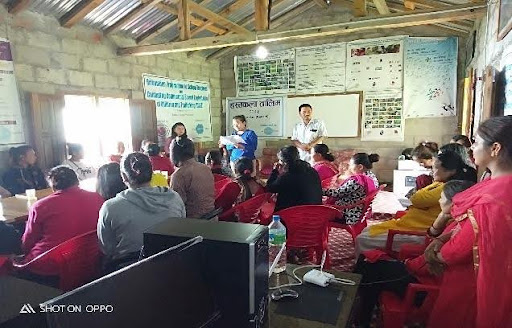
Women Reading for Development Project
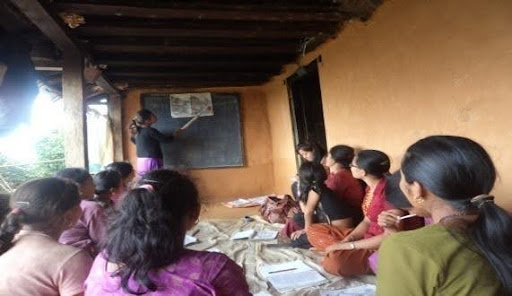
Non formal education for illiterate young girls and women
Basis Literacy Class (BLC) This year HLI-P has been running 10 basic literacy classes for 200 illiterate girls and women. 6 – BLC are ongoing in Kakani VDC, one BLC are ongoing in Thanapati VDC and other three BLC are in Okharpauwa VDC. Ten facilitators for handling these classes are facilitating and they have been running these classes. At the end of these classes, at least neo literate will be able to read and write.
Non-Formal Education programme has been emphasized in the project area in order to make young girls and women under the age of 14 to 45 aware of their situation and understand the prospects to improve it. Literacy (reading and writing skills) is the important tool for education and understanding the situation around, therefore Women Reading for Development (WORD) under the supervision and management of local committees in the respective villages are being facilitated in the project area of KCDC. The simple objective of Basic Literacy classes is to make the young girls and women able to read and write Nepali texts and solve numerical calculations, the broader objective is to make familiar with the existing situations related to education, health, livelihood, environment, girl trafficking, child rights, innate rights, etc. and the probable prospects to improve the conditions for the betterment of the community in large. Altogether 10 Basic Literacy Classes (BLC) is facilitated by local volunteers (facilitators) in all locality and street of the project’s VDCs.
Integrated Project for Protection and Welfare of Children and Women in Nuwakot Livelihood programme
The major objective of the project of KCDC in its project area, is to create favorable environment and mutual understanding among community members and provide them the opportunities, which are within their capacity but of economic gain with little external support. Training regular supervision and guidance with technical support and small financial support as seed money on grants basis are being provided to the women groups on group basis to undertake the income generating activities of their linking. Training and Activities, Community Animator Training, Altogether 15 facilitators were participated in the Animation and People’s Organization Training and it 5 days training was held in KCDC central office at Kakani Height (Nuwakot) in June 2000 for the Community animator to work with women groups of Samundradevi and Sikre VDC and to provide service to the community people according to the objectives of the project, Soap Making Training, Seven-day soap making training programmes were organised in KCDC central office at Kakani Height in technical cooperation of Cottage and Small Industry Development Committee of Nuwakot (HMG) for 10 participants.
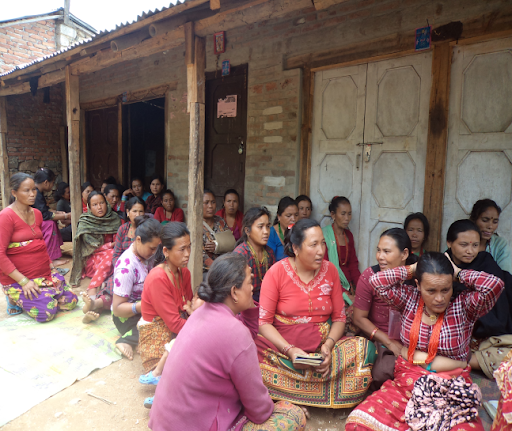
Community Horticulture Development and Income Generation Project

Three days training programmes were organized in Samundradevi for women farmer groups members of 158 household and the training lesson (skill and knowledge) were provided to training participants by horticulturists. And three plants (474 improved variety saplings of mango, citrus and setlia) of different kind of fruit were provided to the woman farmers during the training session end. This programme was planned to demonstrate on front on as a “model” programme. Now these plants are so successful in Samundradevi VDC near the house field. Main objective of this programme is to improve nutrition and health of children and people of rural community in project focused area.
Nutrition Education and Vegetable Training.
Three days training programmes were launched in Samundradevi for 400 mothers groups’ farmer members of different 400 households for kitchen gardening. During the training session end, kitchen gardening seeds (as radish, carrot, cabbage, cauliflower, onion, garlic, turnip, mustard, spinach, bean, cucumber and pumpkin) were distributed to woman farmers to provide supplementary nutrition to health of children and people with home based fresh vegetable. Training session was designed to complete in eight phases according to the schedule of programme.
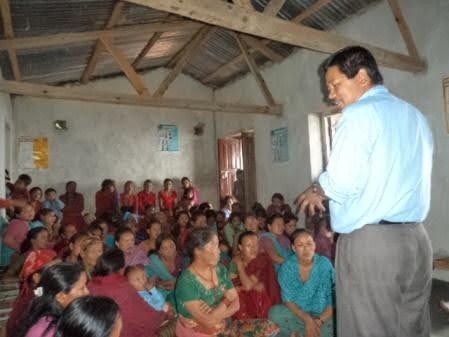
Apiculture training programmes were organized in Bee-Keeping and Honey Production Farm Gokarna kathmandu for 23 participants include 3 male of Samundradevi VDC for income generation of family members at the home level. Bee and beehives were distributed to training participants to change the lives of rural poor women by raising income from apiculture programme. Training was also held on popular farms visit programme around Kathmandu valley and to gain idea and experience and impart knowledge on apiculture by interacting with bee farm owners and staff. This programme is popular on cost-effective, timetable and sustains way for target beneficiary for home level income. Training duration was from September 23 to 27 September 2000.
Women in Development for Micro Enterprise
As neo literate and women participation have been top-prioritized in the different sectors of activities under the project, more and more women have been encouraged to participate in the community based organizations and in development to combat girl trafficking through poverty and hunger reduction as well as sectoral activities. As the result, 15 women’s groups with total of 420 women members have been formed in the initial phase of the programme year 2000. The women group members who have been collecting savings and grant (from KCDC/SEBS/PE) in bi-monthly meetings have been collected 34,063.00 in this year alone.
Leadership and Management and Cooperative training – 6 days leadership, management and cooperative training programmes were organized in KCDC central office at Kakani height for 47 self-help group members of Savings and Credit Groups. The training was focused on motivation, leadership and financial development aspect. The training session was designed in two phases.
a. Self-help promotion and community development
Self-help promotion among women
Approach on community development
Mobilization of savings and credit
Entrepreneurship design and facilitation skills
Women Empowerment and Trafficking Prevention Program
KCDC aims women empowerment, child development and work for human rights in the community by participating in various kinds of development activities in participation with local people on their planning, supervision, monitoring and maintenance of the projects on sustainable way. KCDC on its own or in collaboration with Government Organizations and CBOs and by engaging a specialist team of its own or jointly with the local community to implement activities. Implementing specific public health care and social service programmes to Prevent and eliminate all forms of violence in society, especially to prevent and eliminate domestic violence and to protect the victims of violence, with particular attention to violence against women, children, other person and people with disabilities. Supporting community to eliminate all forms of exploitation, abuse, harassment and violence against women and children, in domestic violence and rape. To give special attention to community people to violence resulting from harmful traditional or customary practices and all forms of extremism, which implies both preventive actions and the rehabilitation of victims.
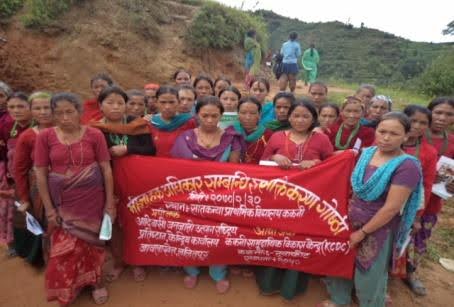
Launch programmes that channel the energy and creativity of children and women towards improving themselves to face and break the cycle of crime, violence, and drug abuse and girls trafficking.
Empower women for resolving conflicts peacefully and reintegrating society to work for the empowerment of women. Combating trafficking in women and children through grass-root community and regionally coordinated measures, establishing an emergency supports for the rehabilitation of the victims of the trafficking of women and children. Facilitating support for disadvantaged women and destitute children to education and development, as well as their participation in social and cultural; life.
Working with women core and giving their greater involvement in the design and implementation of the local projects for the women empowerment and child development particularly in the areas of education, health care, drinking water and sanitation and protection. Promoting opportunities for small farmers and other agricultural, agroforestry and livestock workers on terms that respect sustainable development. Improving social, education, and economic and living conditions of women and children in rural areas and thereby discouraging rural exodus.
Raise the awareness on HIV/AIDS and behavior change and providing support to grandparents who have been required to assume responsibility for children, and help children especially that parent those who are affected by serious diseases, including AIDS or leprosy, or other who are unable to care for their children.
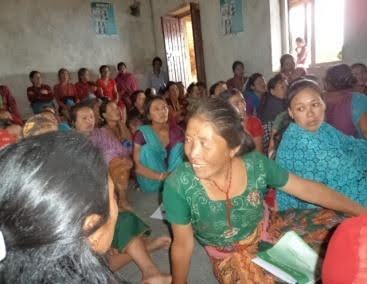
Work for the empowerment of women, gender sensitive, in decision making processes at all levels and gender analysis in development to ensure equality for women to share harmonious and mutually beneficial partnership between women and men in society. Empowerment women of vulnerable and disadvantaged group, including through different types provision of education and skills training. Encouraging men to take an active part in all areas of family and household responsibilities, including the sharing of child rearing and housework. Mobilizing participation, local resources and involvement of the community in the formulation, implementation and evaluation of decisions determining the functioning and well-being of societies and especially work to establish gender equality and equity and empowerment of women in the community.
Promoting the solidarity of caring for one another’s wellbeing and fostering the spirit of mutual support, within the context of human right and education. Encouraging the free formation of cooperatives of women groups to collecting savings and home level access of invest on credit for micro entrepreneurship for income generation programme of women. Encouraging and motivating local people at the village or farm level for reforestation, and mitigation procedures of the environment for deforested with terraces and catch dams, introducing alternative cook stoves that reduce fuel needs and alternative sources of fuel. Promoting IEC programme to raise awareness on women innate right, child right and development activities in the community. Developing a clear understanding of trafficking, its causes, elements, consequences and purposes, and to distinguish trafficking from prostitution, migration and illegal migration.
Understanding the importance of addressing trafficking within the human rights framework, to identify the effects of globalization on trafficking and to examine trafficking within the global context and to develop advocacy and skills around the issues of trafficking. Coordinate and collaborate with District Development Committee (DDC), District Government Organizations (DGOs), Village Development Committees (VDCs), Development Agencies, INGOs, CBOs and benevolent organizations for cooperation and work in partnership for women empowerment and child development to meet basic needs in the poorer community and to reach in collective objectives of the human beings and peace aspect in all walks of life in societies in the zone of humanity, and strengthening networking and exchange of expertise and experience with other social and development organizations.
Agriculture Development and Income Generation Program
As neo literate and women participation have been top-prioritized in the different sectors of activities under the project, more and more women have been encouraged to participate in the community based organizations and in development to combat girl trafficking through poverty and hunger reduction as well as sectoral activities. As the result, 15 women’s groups with total of 420 women members have been formed in the initial phase of the programme. The women group members who have been collecting savings and grant (from KCDC) in bi-monthly meetings have been collected 34,063.00 in this year alone.
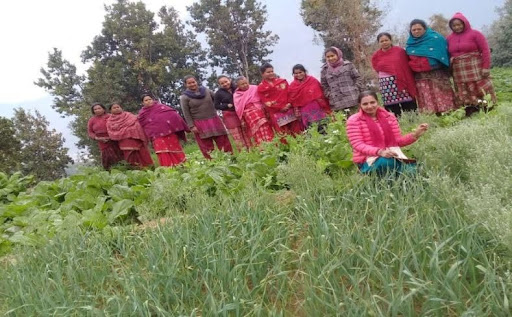
Training programmes were organised in Bee-keeping and Honey Production Centre, Gokarna kathmandu for 14 farmers of Sikre VDC. Apiculture programme has been taken up as an income generating activities at the home level, which is being initiated as demonstration in the initial stage. Once the activities is proven success and the farmers have been so far benefited in the area of Samundradevi are convinced of the difference between traditional and modified way of bee-keeping, the activities will be pushed as an important income generating activity in the area.
Agriculture training programes were organized in Samundradevi VDC ward no. 7, for mother group’s farmer 375 members. The technical knowledge and skills were provided on winter and off-season vegetable farming and its importance to the members of woman farmer groups by agriculturists for the supplementary of mal-nutrition to the children and people’s health. During the training session, a kit with full components vegetable seeds (as carrot, cauliflower, cabbage, turnip, onion, garlic, mustard, spinach, bean, pumpkin and cucumber etc) were provided to the training participants in free of cost in project focused area. A main objective of the programme is to improve nutrition status of the children and people in the rural community by supplying daily evergreen fresh vegetable to the family. This programme is succeeded and most important in the community for the supplementary of VITAMIN-A deficiency and mal-nutrition children and people and it is being a “modal” initiation on popular business to generate income at the home level among community people.
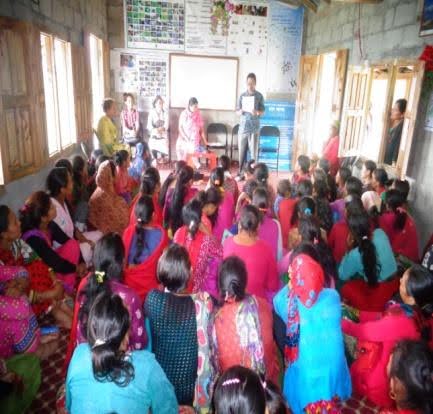
Ginger cultivation training programs were organized in Gurje, Samundradevi VDC for 29 women group members. Technical skill and knowledge were provided to the trainees by agriculturist. Improved ginger seeds were distributed to the 29 woman farmers in free of cost under the income generating, programme during the end of training session. The program has been taken up as a “cash crop” income generating activities at home level, which is being initiated as demonstration in the initial stage. Once the activities is proven success and the farmers have been so far benefited in the project focused area in Samundradevi is convinced of the difference between traditional and modified way of Ginger cultivation, The activities will be pushed as an important income generating activity in the area.
Technical and financial assistance were provided to Gurje villagers for 17 farmer group members for radish cultivation. Radish and vegetable growing are becoming popular enterprises for income generation of the village people in Gurje village, Samundradevi. Radish is export in Balaju Bazar and Bhudhanilkantha Bazar (market) to Kathmandu for creating income by selling crops. Some participants having been involved in other apiculture soap production and candy making as well. KCDC/SEBS/PE believes in small investment for the participants in the project area having the potential of quick and significant economic benefits and sustainability character of the enterprises.
Plantation and Environment Conservation Program
KCDC has abundant experience in natural resource management, livelihood promotion and capacity enhancement of forest users’ groups, all of which se rve to increase the biodiversity of the landscape. KCDC, HKI, OXFAM and FAO were implemented Forestry User Committee Formation and strengthened capacity of committees.
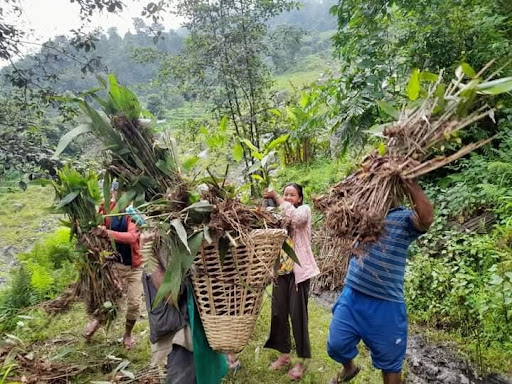
KCDC supporting the application of sustainable landscape management solutions by conducting capacity analysis and needs assessments for livelihood enhancements, coordinating and capacitating stakeholders through workshops and developing local action plans, mapping and prepared district contingencies plan Under the Shivapuri Nagarjun National Park (Project of FAO – Project Expert Dr. Dagmar Forland – FAO) project, funded by the Norwegian government. KCDC has enhanced forest management practices in community forests and private land to increase livelihoods, social equity and environmental impacts, including increased biodiversity.
Through various projects KCDC has enhanced its capacity. KCDC has provided fire management training to more than 150 individuals of two districts with financial support of OXFAM. KCDC has provided emergency fire prevention and controlled equipment to Palikas in Nuwakot and DERC. KCDC has conducted the intervention in support of Planete Enfants and World Education. It was a pioneer built upon lessons learned from the flagship Trees & Bees program, which diversified the income of women led households in Nuwakot while promoting restoration and climate change adaptation.Further, the organization has completed Site level Assessment on Governance and Equity of buffer zone user’s committee (SAGE)/ Site level Assessment of Protected Area (SAPA in Nuwakot, and sustainable land-use scenarios (support by HKI and OXFAM). This strong technical background in assessing, developing, implementing, and capacitating local communities’ ability to sustainably manage their forests and land is complemented by the varied professional expertise within the organization. Our team members possess expertise in various sectors, including forest management, climate change, sustainable livelihoods, gender, and environmental governance.
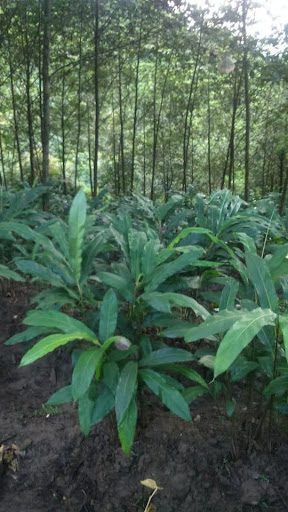
CSEC Trafficking Risky Migration Prevention Program
KCDC in partnership with Freedom Fund was organized orientations in Bidur and in project area for the members of District Committee for Controlling Human Trafficking (DCCHT), members of Local Committee for Controlling Human Trafficking (VCCHT) for strengthening of capacity of DCCHT, LCCHT and Stakeholder Cooperation to Counter Trafficking in Persons and CSEC prevention in the district. Government officials and civil society experts from District headquarters and Palika joined hands with DCCHT/LCCHT to strengthen responses aimed at prevention CSEC and trafficking and assisting trafficking survivors. Convened in collaboration with the Local Government of Nepal, the consultation was the first in a series of six components stakeholder meetings planned by KCDC through Freedom Fund funded CSEC Prevention Project to enhance understanding, cooperation and coordination on various aspects of address human trafficking as on Prevention, Protection, Prosecution, Rescue, Rehabilitation, Reintegration and Capacity Building, using a rights-based approached for survivors and victim-centred approach. The consultations will bring together Anti Human Trafficking (AHT) focal persons, and experts from key government agency, law enforcement agencies, judiciary, civil society organizations, media and academia. And as representatives from different sector and various organizations as NGOs & Service Providers,
Social and Health Services, Public Care Institutions, Teachers, Medical Personnel, Local Police, PVOs, Shelters, BOs, Companies Providing Property and Maintenance Services, Private Citizens, Local Police, Labour Inspectors, Health Inspectors, Trade Unions, CBOs, Victims Services, Migrant/Rescue Support Groups, Taxi drivers, Hotel staff, School Management Committee (SMCs) and Parent Teacher Association (PTAs) were participated in the program.
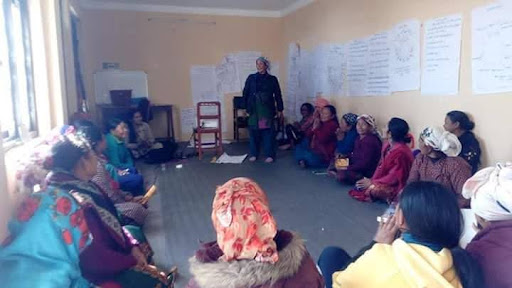
An another agenda was concentrated on Let’s strengthen mechanisms to foster better coordination and cooperation between stakeholders & states to counter trafficking in persons, participants concurred during the discussions, while highlighting the issue as a serious threat to human rights and a grave global social challenge. During the meeting, participants exchanged insights on Palika-specific issues, including the latest trends and patterns of CSEC and trafficking, good practices, responses and mechanisms to prevent and counter CSEC and trafficking at the State and Palika -level, and the key challenges and opportunities within Palikas, District and states.
During the discussions, the lack of strong victim witness prevention and protection mechanisms and isolated responses of key stakeholders were put forth as key challenges impacting the effective prosecution of trafficking crimes. Stressing that rescue and prosecution efforts were not at par with the changing dynamics of the crime, participants said, Organised crime needs organised responses. It is vital to strengthen mechanisms for information sharing and coordination between local government and states as well as stakeholders and create a database of missing girls and traffickers.
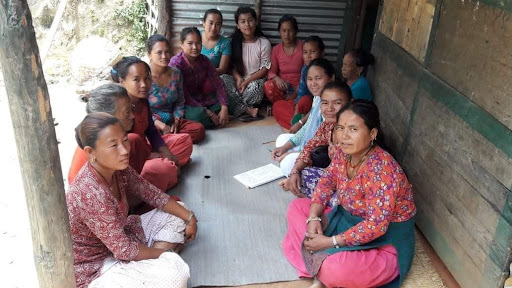
Project for Livestock Development and Income Generation for Women
Agriculture and goat rearing, poultry farming and buffalo farming have introduced strategies and techniques designed to reduce the sensitivity of populations living in low-productivity hill and mountain habits, to external climatic and resource-based constraints. The intention is to create a district-wise diversification in the range of sustainable agriculture techniques available to local people, to maximize overall productivity and minimize the risk of poverty and nutritional deficits.
Such situation will be more complicated, if timely action is not taken to address this problem. The KCDC has worked in partnership with World Education, Save the Children International, Helen Keller International, Geneva Global, Terre des hommes and Freedom Fund and Government of Nepal to make agriculture and livestock programs to eradicate hunger and reduce poverty for prevention of CSEC and trafficking in Nuwakot district.There is effective strategies so that Nuwakot could meet the growing demand for meat and fresh-green vegetable on its own. Kispang and Myaghang is rich in forest and agriculture biodiversity and on side Capital and Kathmandu Valley is so near and adjoin.

It can make the best utilisation of the poverty reduction program as Goat Rearing and Vegetable Farming and the agriculture commodity products as most of the rural communities depend heavily on natural resources for their livelihood requirements and access of market and transportation. Hence, there it is a short-term interventions to address to the immediate needs of the poor women and family. In the medium to long run, the aims of the project is to link the provision of productive asset base at both farm and community level so that there is rise in per- unit productivity as well as total production.
Provision of irrigation with water-efficient technologies, optimized use of natural resources, better skills of farming and climate-specific input supply and quality human capital can be the sustainable way for better livelihoods for prevention of CSEC, risky migration and trafficking in the area. KCDC has been working in the sector of food security, sustainable livelihoods and agriculture through best use of the natural resources over a long time. It has a vision of a just society of poverty reduction sufficient poor living with a self-esteem and dignified life in Kispang and Myaghang Rural Municipality of Nuwakot.

Agroforestry Development and Climate Change Prevention Program
Fruit plantation programme is being emphasised with its many-fold importance in environmental improvement, soil conservation, and source of VITAMIN to health and regeneration of underground water sources. Community members are encouraged and being initiated to plant tree-saplings of any kind of fruits. Plantation of fruit-tree-saplings is considered both as income generating and environment improvement activity. More than 1,440 saplings of temperate fruit trees (improved variety; as peach, plumb, pear, apricot and almond) were made available 10 fruit saplings each woman member on distribution in free of cost for the 144 community woman members in Samundradevi and Sikre VDC in order to be planted in backyards of the community household. They have been well oriented for plantation, protection and management aspects of planted saplings, so, now the growth of fruit trees is so successful on sustain way in the project focused areas. On other side, training session was focused on fruit plantation program should be emphasized with its many-fold importance of agroforestry enterprise and environmental improvement, soil conservation, and source of income and regeneration of water sources and income generation.The community members are encouraged and being initiated to plant tree-saplings of any kind of fruits. Plantation of fruit-tree-saplings is considered both as income generating and environment improvement activity.
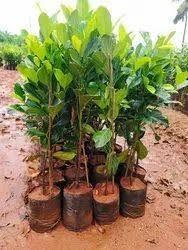
The training participants are interested to plant the saplings of temperate fruit trees (improved variety; as peach, plumb, pear, apricot, fodder, reed, broom grass, cardamom, orange, leman, mango and lichi) have to make available fruit saplings each woman member on distribution in free of cost for the women members in project area in Kakani, Tadi, Suryagadhi, Likhu and Shivepuri Rural Municipality in Nuwakot in order to be planted in backyards of the community household. They have been well oriented for plantation, protection and management aspects of planted saplings for successful on sustain way in the project focused areas.
Drinking Water and Sanitation Program
26 community, village and schools of Dupcheswor and Kakani Rural Municipality in Nuwakot drinking water and sanitation schemes have been facilitated and benefited with drinking water system in Nuwakot. Community participation was of great importance in the completion of the project. The project of KCDC provided 26 drinking water projects and 20000 water taps installed in the 26 village covering the entire household for easy availability of potable water for 22000 households and it is under full use. The drinking water project is stopped the seen water-borne diseases on pretty common among local people. The projects have already been handed over community. The local users’ community which have taken full responsibility for maintenance of the system for which they have already accumulated financial resource from local contribution. This drinking water system is a modal project to be and being cited as a successful example of the achievement of villager’s unity and community participation.
New Step New Path Project
New Path New Steps (World Education Movement) – this project is conceptualized the model of community network to eliminate the cause of child labor at the village level. Creating a child labor free village is a step towards New Path New Steps’ vision of making a child labor free in Nuwakot. Community Network (CN) is conceptualized in 2010 and its implementation begin in January 2011. It will be so far realized in 61 VDCs and in 1 Bidur Municipality and will be going in every locality and streets of the ward of the VDCs in Nuwakot. The uniqueness of NPNS initiative lies in the active participation of the community in creating legitimate democratic space for themselves in Gawn Sabha, community, schools and families. Secondly it addresses the rooted problem of child labor and creates demand and value for good education includes village pride, ignites the mass consciousness using the people’s potential, power and local resources forming a significant element for success and sustainability on eliminating child labor. The CN is the true translation of child rights at the grassroots level in Nuwakot.
NBNP project – Non-Formal Education programme has been emphasized in the project area in order to make boys and girls under the age of 6 to 14 aware of their situation and understand the prospects to improve it. Literacy (reading and writing skills) is the important tool for education and understanding the situation around Therefore Children literacy classes (CLC) under the supervision and management of local committees in the respective villages are being facilitated in the project area of KCDC.
The simple objective of children literacy classes is to make the boys and girls able to read and write Nepali texts and solve numerical calculations and general English upto to the level of 5 class pass but the broader objective is to make familiar with the existing situations related to education, health, livelihood, environment, girl trafficking, child rights, innate rights, etc. and the probable prospects to improve the conditions for the betterment of the community in large. Altogether 9 Chlidren Literacy Classes (CLC) is facilitated by local volunteers (facilitators) in all locality and street of the project’s VDCs.
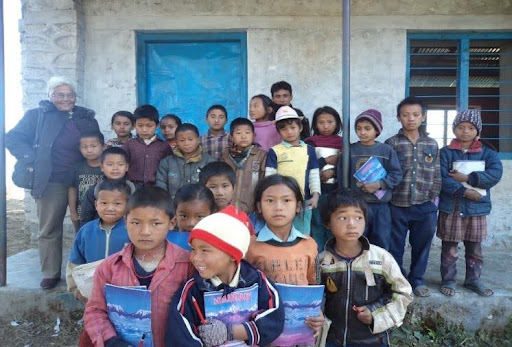
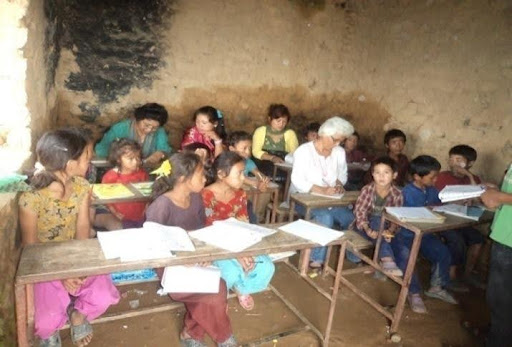
Initial 7 days facilitator training was provided to the 9 facilitators in KCDC Central Office at Kakani Height for basic teaching skills from 17 April to 23 April 2001, and refresher training will be also provided on mid-time for facilitators during the 9 months literacy classes running. Literacy certificates will be given to the successful participants who complete nine-months of regular classes and are capable to read and write Nepali prints and writings and solve numerical calculations with English.Main aims of this programme; to improve access for out of school boys and girls to a form and quality of education that imparts the skills and awareness necessary for them to participate in their own education development and for link up with Formal School.
Literacy and awareness at least out of school children get educational access to becoming literate to class 5 passed to equivalent and having demonstrated use of this training and it will be key indicator to amend poor lives for eliminating child labor in the rural community.
Human Liberty Initiative Project
The Human Liberty Initiative (HLI) PROJECT- is now in its second year of working in Nuwakot. This project has been designed basically safe migration and as holistic approach through Micro-Finance to stop the problem of illegal human trafficking from the target area; for forced prostitution in brothels in India. Alongside, the program will facilitate the state of girl and empower women in the target area.
Having considered the state of the affairs, local needs and the root cause of the problem of human trafficking: the project emphasizes on establishing a precise data base, promoting education, awareness and income generating activities.
Poverty, lack of education & awareness, hardship of life style. Discrimination towards woman, lack of alternative economic activities and lucrative profit for the trafficker are some of the major factors contributing towards the causes of girl trafficking to India for prostitution. Like for instance, a considerable number of girls are said to have been sold for prostitution in India with the consent of their parents. The aforementioned factors also have innumerable negative effects towards department of women and girl children in Nepal.
To eliminate this state of ignorance, poverty, discrimination and state of under-development-and the negative aspects that has arisen due to these factors, the project consists of various programs with long term impact both to fight trafficking and as a development programme as well like:
Programme of Income Generating Skill for Young Women through Micro-Finance- This program is expected to aid in project objective of women empowerment and fight against girl trafficking in many ways. Earning women will start to command respect, heavy reliance on agriculture will reduce, and income levels will rise. This will also help indirectly in controlling traffic by reducing the chances of girls being lured in to the trap by checking them from leaving the villages for employment. The practice to sell women for economic gains will be eliminated as this seems to have been the cause in some cases.
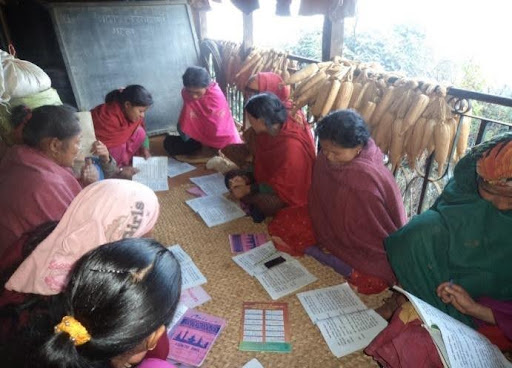
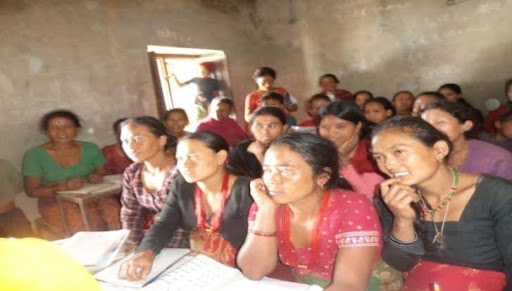
Awareness Programmes – Awareness on evils and negative effects of trafficking. Ways and means used by the trafficker etc. will be generated to inform and alert the locals. Similarly, awareness campaigns relating to basic health and AIDS will also be conducted. These issues are highly essential in the target area for accomplishment of stated objectives
Orientation and counseling – There is a great need to create awareness on the issue to village, community and family members. The major objective of this program is not only provide them information about this crime but also to reintegrate them to come forward and also making a campaign of business lobby for prevention of trafficking. Women and young girls are considered a high preference to business motives and for home level income generating in the village. And as this income of the family will play an important role to the development of family and village. It will be strengthened capacity of family and community to break the cycle of girls trafficking in the village.
Education Schools Buildings Construction Sponsorship and Library Promotion Program
The founder members of KCDC are dedicated to social development with a life-long commitment to work for the empowerment of greatly disadvantaged sections of society. It is presently working with marginalized and disadvantaged children, especially girls in the poor than poorer community of Tamang and Dalits in Nuwakot and in Nepal with 13 Resource Centers in 61 VDCs and 1 Municipality schools focusing on the School Parents and Teachers’ Association (PTAs) and School Management Committee (SMCs) workshop, network of schools, schools mapping, network and workshop of schools directors, Inter RCs workshop and formulation of child protection committees program. It has a strong presence at the grass root level and its strength lies in mobilizing communities as well as schools with implementing program activities at all levels for elimination of child labor and stop CSEC and Girls Trafficking in Tamang Community.
KCDC has been running its activities at Nuwakot for the last 16 years and is committed to work towards the Elimination of Gender Disparity in Education by providing access to and promoting educational initiatives within schools and communities to mainstream vulnerable children especially girls. It also networks with and mobilizes the different stake holders towards improving the quality of education to increase the rate of retention and transition of children in formal Government schools. In this pursuit KCDC is implementing diverse programs which aim to promote school effectiveness, and create an encouraging environment for education, which supports the completion of elementary education by all the children in and out of school, especially girls.
It has been able to involve adolescents in protecting and promoting their rights through various activities at the grass root level with financial and technical Assistance of World Education, Room to Read, Geneva Global, Freedom Fund, Planete Enfants and UNICEF. To upgrade the school standard, education quality and norms, KCDC was supported 10 schools for school buildings construction and renovation and established of library in 56 schools of 44 VDC in Nuwakot. Mainly the supports were provided to the schools as furniture, office materials, display charts, sports goods, scientific instruments, etc. beside this, KCDC has also supported many schools by providing locally non-available materials as construction materials for school buildings construction as cement, corrugated iron sheets for roofing, iron doors and windows, paints, skilled labour perdiem and another essential assistance.
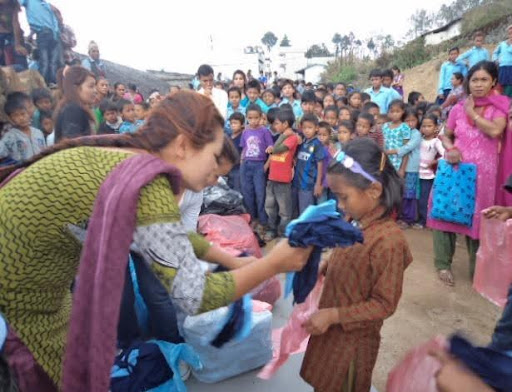
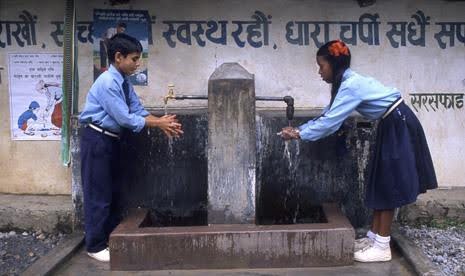
Many schools have supported by developing school grounds, toilets making and drinking water supply facility.
The school buildings have already been handed over to the School Management Committees and community, which have taken full responsibility for maintenance of the school buildings. Community participation was of great importance in the completion of the project. School buildings construction system and approach is a modal project to be and being cited as a successful example of the achievement of guardian and School management Committee’s unity and community participation.
Integrated Health and Nutrition Program – Suaahara I & II
SUAAHARA Project – Good Nutrition
KCDC in Nuwakot and community currently faces a period of tremendous challenges and transitions, including the implementation of a new constitution, moving to a federal system, and recovering from a devastating earthquake. Against this backdrop, safeguarding the health and nutrition of underserved groups is critical. Though under-nutrition indicators have improved over the last decade, 36% of children under five remain stunted. Anemia is also a concern, with rates among adolescent girls, pregnant women and children 6-59 months old, ranging from 41-53%. Poor maternal nutrition and infant and young child feeding practices, including insufficient dietary diversity and quantity are key determinants of under-nutrition. Gender discrimination, in the form of women’s heavy work load, inadequate decision-making power and control over resources, early and frequent pregnancies, and household food-distribution favoring men, all contribute to under-nutrition in women and children. Poor water, sanitation and hygiene practices also negatively affect health outcomes. KCDC has made great strides in ending open defecation, but 15% of households still don’t have a latrine. Use of healthcare is suboptimal, although improving. The proportion of women who had the WHO-recommended minimum of four antenatal care (ANC) visits increased from 50% to 69% between 2011 and 2016. Approximately 24% of women wish to space or limit births but are not using contraception.
Suaahara I & II is a five-year (2014 -2022), integrated program dedicated to improving the health and nutrition status of women and children who fall within the 1,000 days period, from conception until a child reaches 24 months of age. This period is recognized as the crucial timeframe during which nutritional interventions have optimal impact on child growth and development. In selected all VDCs and Palikas in Nuwakot, Suaahara I & II has support the Government of Nepal (GON) in expanding health and nutrition services that target adolescents. In particular, the project has addressed anemia, reproductive health, menstrual hygiene, food diversity, social attitudes towards delayed marriage and pregnancy, and health service utilization. Suaahara has also collaborate with existing projects and private sector groups towards shared objectives.
Activities of the program was focused on promote key Maternal, Infant and Young Child Nutrition (MIYCN) practices through an intensive behavior change strategy, including interpersonal communication activities, radio programs, and the use of mobile technology at the community level.
Expand coverage of the community-based integrated management of newborn and childhood illness program and strengthen growth monitoring and promotion at outreach clinics and health facilities. Enhance clean water, sanitation, and hygiene conditions of household facilities and establish private sector linkages to promote WASH technologies. Improve consumption of nutritious food through increased production, improved post-harvest storage, and processing diverse nutritious food, especially for women farmers from disadvantaged groups.
Strengthen coordination on health and nutrition between government and other stakeholders through the Food Security and Nutrition Coordination Committee, Nepal Nutrition Group, Nutrition Technical Committee, Safe Motherhood sub- committee, Family Planning Sub -committee, and Reproductive Health Coordination Committee. Strengthen the technical, managerial, operational capacity of health and non-health sectors take holders at the district and Village Development Committee (VDC) levels to enhance MSNP implementation.
KEY OUTCOMES – Reduce stunting, underweight, and wasting prevalence among children under five in 62 VDCs and 12 Palikas Nuwakot district.


Improve household health and nutrition behaviors. Increase use of quality maternal, newborn, and child health services; family planning services.
Improve water, sanitation and hygiene behavior and practices. Increased consumption of diverse and nutritious foods by women and their families.
Improve the food security of households. Transfer of key nutrition and health services in Suaahara target VDCs and Palikas to GON management as appropriate.
Nepal Earthquake Response, Recovery and Reconstruction Program
On 25 April 2015, a massive 7.6 magnitude earthquake struck Nepal that left nearly 9,000 people dead and destroyed or damaged more than 850,000 homes. Transport and communications were severely disrupted. Hundreds of thousands of people fled their homes fearing aftershocks on 12 May a second earthquake caused further devastation – and gathered in makeshift camps without proper water and sanitation facilities for weeks.
Women, children, the elderly, people living with disabilities and those belonging to lower castes have all been disproportionately affected. Besides, the earthquake impacted employment severely. The problem of landlessness, widespread before the quake, had also worsened.
Our immediate response
KCDC and its partners USAID, Helen Keller International, OXFAM, Geneva Global, World Vision International and World Education immediately responded by providing lifesaving relief including emergency food items, drinking water and by setting up temporary shelters and emergency latrines.
In the first few days and weeks after the earthquake, our priorities were to ensure that affected people had access to adequate humanitarian assistance and to prevent the outbreak of waterborne diseases. We distributed staple food supplies, alongside rice seeds and agricultural tools for farmers. In Nuwakot and Kathmandu Valley, we provided clean water and sanitation facilities to earthquake survivors living in some of the worst-hit districts. Our technical experts constructed water tanks and sanitation facilities in the temporary camps. Outside of Nuwakot, we managed to ship vital emergency supplies to Dhading, Rasuwa and Sindhupalchowk, as well as providing tarpaulins, rice, seeds, water and sanitation equipment to other hard-hit rural districts with very limited road access. We’ve been working in 62 of Nuwakot district and coordinated and network with most affected districts Gorkha, Nuwakot, Dhading, Sindhupalchowk, Kathmandu, Lalitpur and Bhaktapur.
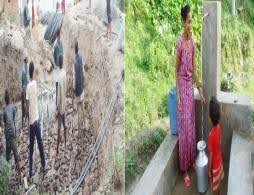
Our response in numbers
More than 90,000 people benefited from KCDC’s humanitarian response. 51% women and 49% men
60,000.people got access to clean water, sanitation, food, and shelter
28.000 hygiene kits distributed
500 families restarted their lost businesses
600 farmers received rice seeds
Rebuilding stronger and better
One year on, 1300 people displaced by the earthquake were still living in temporary camps. Therefore, we moved to a recovery and reconstruction phase to provide sustainable support in housing, as well as in water and sanitation, livelihoods and job creation. We installed waterproofed shelters and helped to protect livestock; facilitated training to vulnerable people, many women among them, to become carpenters and masons to be able to build earthquake-resilient houses, and rehabilitate damaged water supplies in schools and hill communities. KCDC has conducted food security program and livelihood program.
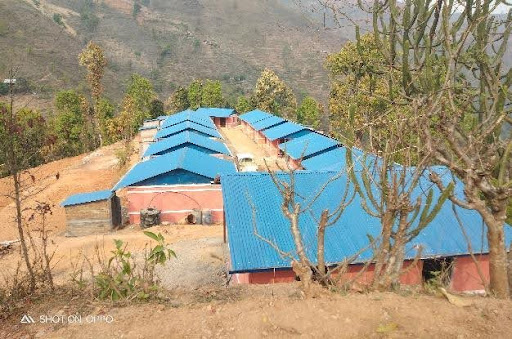
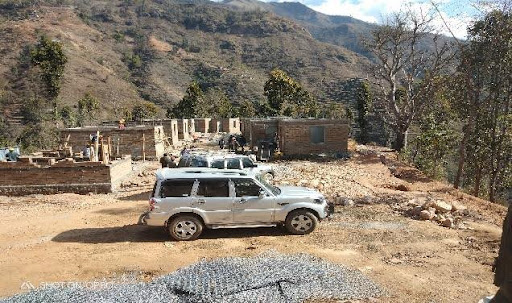
KCDC has constructed 38 buildings houses for 38 internally displaced family (IDFs) in Nuwakot. We assisted people to recover their livelihoods, by restarting economic activities in the communities. We set up Cash for Work programs which provided short-term employment in the rebuilding of community services and benefited 5,000 vulnerable families.Our response contributed to creating lasting change and support vulnerable people, especially women, to be directly involved in improving their own well-being and that of their communities, helping to foster solidarity and social cohesion.
Access to clean water has changed our lives – Maya’s story
Maya Tamang, 42, was nine months pregnant when the first earthquake shook Nepal and she was at the hospital when the second one occurred. Although she was left mostly alone and she was scared, the delivery went well. Maya, who lives in Nuwakot district, received a bucket, hygiene kit, blankets and other emergency supplies just in the aftermath. Ten months after the quake, UNICEF and KCDC rehabilitated the water supply system in her community and now she has access to water that is safe to drink. Right after the earthquake, before this tap was constructed, our water source which we used to fetch water from, dried up. So, from the time of the earthquake until this tap was installed, it was difficult to find water. We had to go downhill to get it and carry the pots from there. Each trip used to take us 30 minutes. We would need four to five water pots for the family, and then four to five pots for the cattle, so altogether we had to make four to five trips a day. Now, that time is saved, because we don’t need to make those trips and drinking water and hygiene practices have really improved. It’s a relief. Apart from rehabilitating the water supply system, KCDC supported a vegetal farming program, which has been coordinated through a women’s group. Maya Tamang is part of it. Now we grow our own garlic, onions, tomatoes and other vegetables, so we don’t need to buy them. It is nice and I am very happy, says Maya Tamang.
Gender and protection
Over a quarter of houses damaged by the earthquakes were owned by single women, and only a few of them had access to land titles, leaving women in danger of being excluded from the reconstruction process. To avoid this, we included them in all projects and programs, such as the masonry and carpentry training. We also organized activities through 5 different women networks to influence decision making, raise awareness about gender-based violence and girls trafficking, legal rights, citizenship, sanitation, social security and livelihoods.
Health Recovery and Reconstruction Project
In Nuwakot KCDC provided 600 families with shelter and non-food items, reached more than 3000 people through repairs of health posts and provisions of medical supplies and equipment and constructed 6 health post buildings houses in Nuwakot, as well as provided access to clean water to more than 18,000 people. KCDC also continues to integrate gender and social inclusion, disaster risk reduction and build back safer initiatives in its programs to strengthen community resilience and further help communities rebuild and thrive with more opportunities in the future.Overcoming challenges brought by fuel shortages, harsh monsoons and winter seasons, and logistical complexities brought by tough hilly mountainous region in Nuwakot. KCDC has reached 3,984 people from emergency to recovery phase.
As living conditions and access to basic services continue to improve, we remain committed to meet emergency needs, strengthen resilience and self-recovery and restore a sense of safety for earthquake-affected children and their communities. We are hopeful that children and families can rebuild their communities and be ready to pursue meaningful opportunities in the future. Working in the worst-hit VDCs Haldekalika, Narjamandap and Sundradevi in Nuwakot. KCDC continues to establish partnerships working alongside community, stakeholders, government and community based organizations promoting shared accountability, enhanced local capacities and community participation to serving communities in the Nuwakot Earthquake Response.

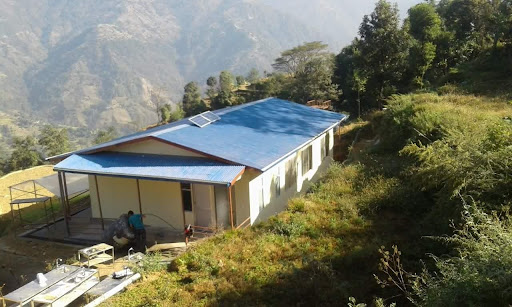
KCDC is focused on providing opportunities to communities to give them ownership of their recovery- men, women and families can bounce back and strengthen their community’s resilience that can withstand disasters in the future. KCDC supports communities with a mix of goods, access to services, cash assistance, trainings and infrastructure around disaster preparedness, health and nutrition; education; water, hygiene and sanitation, and shelter and livelihood. KCDC remains committed to serving the earthquake-affected communities, standing side by side with the people in their journey from devastation to recovery and rehabilitation, restoring hope and dignity for hundreds of thousands affected.
CSEC Education Trafficking Modern Slavery Livelihood Safe Migration and Sponsorship Project
The aims of this project of KCDC is to focus on formation and support of CVCs in 9 wards of 3 new VDCs in Suryamati, Thansing and Okharpauwa and existing Kakani, Sunkhani and Thanapati VDCs in Nuwakot. They have been so far benefited a total of 702 CVCs members. The selected VDCs are predominately inhabited by Tamang people. Tamang are rural ethnic minority group and have been known to be highly affected by trafficking as suggested by anecdotal evidences. All the proposed CVCs were formed through facilitated meetings, member orientation, and by building community relationships and linkages with other VDC and district level stakeholders. Through the facilitation of workshops, the organization has leveraged relationships built with other anti-trafficking NGOs and increased engagement of the district level actors such as police, public prosecutor, District Committee to Combat Human Trafficking (DCCHT), and the District Child Welfare Board (DCWB) in prevention and reintegration of CSEC survivors. One of the goals of the workshops was to empower civil society organizations to revitalize and engage the DCCHT, which was inactive in Nuwakot district.
Formation of Community Vigilance Committee in 54 Ward Level in 6 VDCs for 703 members and increased prevention measures and evidence from the field suggests that establishment of community based CSEC vigilance committees are an important tool in preventing trafficking among the vulnerable communities, particularly adolescent girls. An effective Monitoring and Interception system at the community level, created by the community itself is effective in prevention of cases of trafficking. There are other successful examples of effectiveness of community monitoring systems in combating trafficking of girls. Considering this Community Monitoring and Interception System is designed to formatting of Vigilance Committee in each ward of 6 VDCs in project area VDCs in Nuwakot.The Vigilance Committees is established under this project with the following objectives – Intercepted the cases where a girl is being trafficked away from the community, interrogated and talked to the strangers who enter the community and look suspicious because of their appearance or behavior, helped the community people in lodging of First Information Report and pursue the cases of trafficking further, provided a platform to the community where any girl or member of the community can approach and seek help with regards to the problem oftrafficking. Children withdrawn from CSE and those who were at-risk of exploitation. Education supports were provided through the distribution of scholastic materials. The main aim of this support was to continue the education of the vulnerable children so that their chance of being victimized is reduced. KCDC has been interlinked with CVCs and VCPCs for assessment of applicants for award scholarships, and monitor the scholarships. Besides the direct benefits of children received scholarships, this collaboration has been enabled community groups like CVCs and VCPCs and they are more effective and functional in reduction of CSEC, empowered, and gained credibility in the community. Anti-trafficking orientations in all six VCCs were conducted for schools students and teachers, PTAs and SMCs in coordination with the schools as a part of their extra-curricular activities. Raised the awareness of students on these issues of CSEC, in turn, provided an opportunity for the students to share information and raised the awareness of their parents and the broader community on CSEC and trafficking prevention. The aim of the orientations was to share information with students and teacher, PTAs and SMCs through child clubs formation and institution development so that they are capable and sensitive to control the trend of likely to be recruited into the adult entertainment sector to Kathmandu from source District Nuwakot
KCDC has been organized 10 child clubs in 10 different schools. Training and orientation ware provided to child clubs’ members and teachers of 17 schools (including existing 7 child clubs in 7 schools). Training was organized for social mobilizers on formation and facilitation the child clubs. After jointly facilitating the child clubs for a certain time period with KCDC, the social mobilizer has a set plan of action to slowly transfer the responsibility to a teacher within the schools to sustainably continue the child clubs for prevention of CSEC and trafficking in the area.
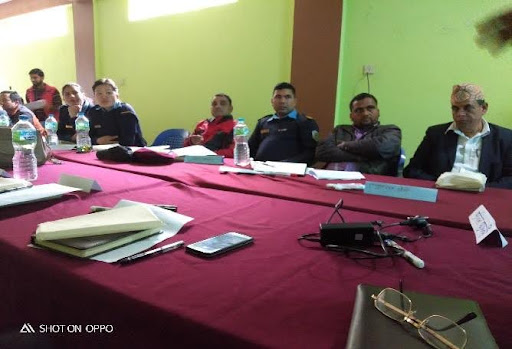

Schools Orientation on prevention of CSEC and orientation to schools for head teachers, PTAs, SMCs and teachers on form of economic exploitation or any work that is likely to be hazardous or interfere with a child’s physical, mental, spiritual, or social development. Child protection: Preventing and responding to specific situations where children are at risk of, subject to abuse, violence, torture, armed conflict, physical, sexual, mental and emotional abuse, exploitation, discrimination, persecution, exclusion, neglect or deprivation of parental or other family care, with a view to ending the abuse, neglect or removing children from the abusive situation and securing those children’s full integration ort re-integration to their families and communities or as a last resort, other protective environments.
Where all their rights can be met and protected, from more than 6 stakeholder agencies, including the Rural Municipalities Office, local and federal law enforcement, district stakeholders, public defenders, CSEC vigilance committees, the family, child welfare agencies, and service providers. In addition, quantitative surveys were administered to the same stakeholders examining: (1) the severity of CSEC-related problems in the three above areas, (2) the general frequency and quality of stakeholder communication, and (3) the specific frequency of communication among each pair of stakeholders in the village-wide network. The program also included a quasi-experimental analysis testing whether exploiter prosecution outcomes changed after the implementation of an enhanced prevention measures and initiative.
